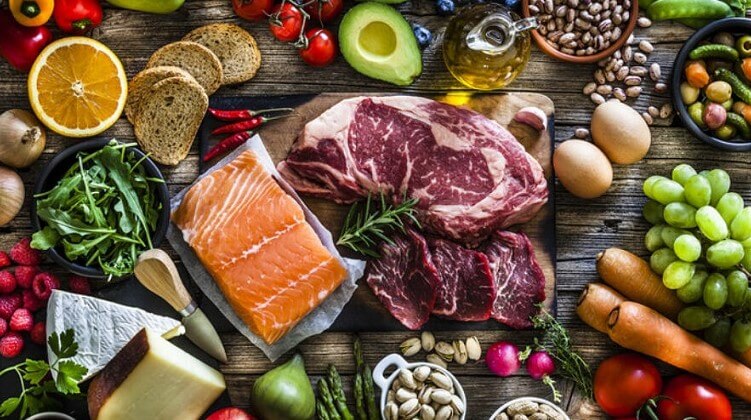Muscle mass in humans is predetermined by factors like heredity, endocrine differences between the sexes, and chronological age. To increase your muscle mass, you need to do things that help muscles grow and eat more calories than you burn. But after you’ve built muscle, you risk losing it if you stop stimulating it or if your caloric intake falls below your energy expenditure. Also diminishing with aging is the natural muscle mass you had as a young adult. To keep your mobility, strength, and independence as you age, you need to keep your muscle mass.
Tips to Maintain Muscle Mass
If you want to maintain muscle mass and not lose it, you can do so by taking these bodybuilding tips to heart:
- Diet and exercise are equally crucial.
- Lift weights on a regular basis.
- Make sure you have sufficient amounts of protein in your diet.
- Eat enough to keep your energy levels up.
- Use both cardiovascular and weight training to achieve optimal results.
- Be sure to get enough sleep.
Engage In Strength Training
At roughly the 30-mark, we experience a gradual but steady decline in muscle mass due to aging. Sarcopenia, the loss of muscle mass associated with aging, is first noticeable at about age 40 and accelerates from there, reducing muscle mass by 30–50% by age 80.
There are a variety of variables, including genetics and lifestyle choices, that contribute to muscular atrophy. The key factors are a decline in sex hormones and physical activity levels as people age. If you keep yourself physically active, you can delay or even stop this normal process of aging and decline. Lift weights twice or thrice a week and make sure to target all your major muscle groups. Two days of rest should ideally pass between sessions.

Pay Attention to Your Protein Intake
Maintaining muscle mass as you become older can be accomplished by eating a healthy diet and consuming the appropriate quantity of protein for your degree of physical activity. If you’re an older adult who wants to keep their muscle mass, you need to consume at least 0.8 grams of protein per kilogram of body weight every day, and 1.2 grams per kilogram is ideal.
The recommended daily intake of protein is calculated by multiplying a person’s body weight in pounds by 0.45. To get your daily protein intake, multiply that figure by 1.2 (in grams). Muscle growth and maintenance depend on protein since it stimulates cell division and aids in tissue repair.
Several studies have shown that a high protein intake is necessary for maintaining muscle mass as people age and during calorie-restricted diets. It is common for the elderly to undereat protein, which increases their risk of protein shortage.
In addition, it’s probable that declining gut function and bacteria contribute to diminished protein absorption in the elderly. To help you get the protein you need, protein powder can be added to your diet. Supplementing with protein can help the elderly acquire the amount of protein they need to keep their muscles from wasting away.
Don’t Skimp on the Calories
Let’s say you don’t consume enough calories from food and drink to keep your weight in line with the amount of energy you use up in normal, everyday activities like walking, running, and lifting weights. This will lead to muscle and, most likely, bone loss. Keeping an eye on your calorie intake as a whole might help you maintain your muscle mass. While getting adequate protein is necessary, especially for hard-core exercisers like athletes, getting enough calories may be even more important.
Carbohydrates are crucial because they act as an anabolic (muscle-building) stimulus in the body. Lack of sufficient protein can lead to muscular atrophy. Getting enough nutrition is also crucial after a workout. An insulin rise from eating protein and carbs within an hour of a workout, and again afterward if necessary, can help with muscle maintenance and even growth.
To perform at your best as an athlete, you must find your optimal weight, monitor your progress on the scales, and change your eating and training habits accordingly. Extremely active people have greater caloric needs than sedentary people.

Perform Muscle-Supporting Exercises
Maintaining muscle mass is influenced by both the amount and nature of training you do. Weight-bearing exercise is essential, as we’ve already established. Aerobic exercise is great for your heart and can help avoid disease, but it won’t do much to preserve your muscle mass. In reality, excessive endurance training can cause muscle atrophy as the body sheds extra weight in an effort to be more agile and efficient.
However, enhancing your capacity to keep muscles by combining resistance training and cardio activity, or vice versa, can be accomplished. It also affects what kind of resistance training you undertake. If you’re trying to maintain your muscle mass while cutting calories, focusing on hypertrophy-style training can help.
It is recommended to lift weights at least three times each week, with at least two days per week dedicated to each body area. In order to keep seeing gains or maintain your current level of muscle mass, you will need to increase the frequency of your workouts and increasingly overload your muscles.
Take it Easy and Grab some Shut-eye
To put it simply, sleep is a period of restoration. Hormones such as testosterone and human growth hormone get to work fixing and restoring your body. Getting enough sleep will aid in this process. Because emotional stress triggers the release of catabolic stress hormones, leading to even more muscle damage, taking time to relax is also crucial.
In addition to recharging your batteries, a good night’s rest can inspire healthier decisions at the dinner table. In addition, rest is essential for muscle development and upkeep. Hard gainers are so-called in the world of bodybuilding and weight training since they don’t seem to naturally carry or easily enhance muscle. To some ears, this may seem insulting, but it is meant merely as a statement of truth.
Science classifies naturally skinny people as ectomorphs while mesomorphs have more muscular physiques. It’s possible that endomorphs are the naturally chubbier types of people. But don’t worry, there are a lot of different colors in between, and being an ectomorph doesn’t mean you have to stay tiny forever (although, drugs apart, an ectomorph probably won’t ever be Mr. Universe).

In Conclusion
Muscle mass and the rate and extent of muscle loss with aging depend on a number of factors. However, your risk of muscle loss can be reduced by making adjustments to your diet, exercise routine, and other aspects of your daily routine. Keeping your muscles strong is crucial to an independent and healthy life even in your middle and golden age. If you can keep your muscles strong as you age, you’ll have a far greater chance of enjoying a comfortable and fulfilling old age. Also, do not hesitate to consult your physician if you are worried about muscle wasting.


